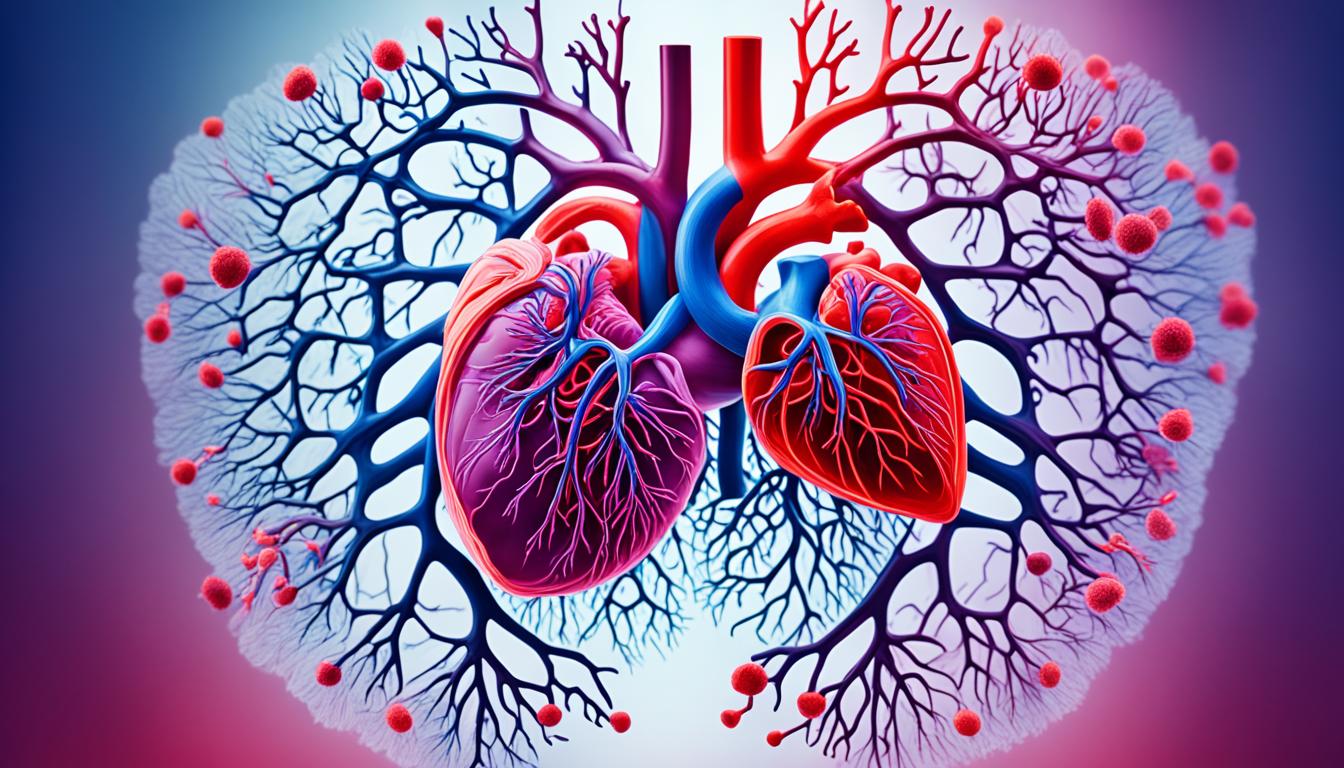An anatomic survey from 1952 found partial anomalous pulmonary venous return (PAPVR). This is a congenital heart problem. It means the pulmonary veins send blood to the right atrium, not the left atrium. This discovery helped improve surgeries for it. Those with PAPVR might face heart failure and arrhythmias. Finding it early helps with better treatment results. Stem cell therapy is showing promise in repairing the heart of PAPVR patients.
Key Takeaways:
- Partial anomalous pulmonary venous return (PAPVR) is a congenital heart defect where pulmonary veins return oxygenated blood to the right atrium instead of the left atrium.
- Early diagnosis of PAPVR is crucial for timely interventions and improved outcomes.
- PAPVR can cause symptoms and complications such as heart failure and arrhythmias.
- Advancements in surgical treatments have been made for PAPVR.
- Stem cell therapy offers the potential for regenerative cardiac repair in patients with PAPVR.
Causes and Diagnosis of Partial Anomalous Pulmonary Venous Return
Partial anomalous pulmonary venous return (PAPVR) happens when blood flows the wrong way in the heart. Instead of going to the left atrium, where it should, the blood goes to the right atrium. We know that genetic changes can cause PAPVR. It might happen alone or with other heart problems, like atrial septal defects (ASD).
Diagnosing PAPVR needs careful checks and high-tech heart imaging. Echocardiography, an ultrasound of the heart, is key at first. It shows problems and how the veins are connected wrong. It’s followed by more tests like CT scans and MRI scans. These give clear pictures of the heart’s blood flow for better treatment planning.
Now, let’s look at what causes and how we diagnose PAPVR:
- Etiological Factors: Scientists think genetic changes sometimes cause PAPVR. They’ve found gene issues in some people with heart birth defects, including PAPVR. But, we’re still studying how these gene problems make the veins grow wrong.
- Cardiac Abnormalities: PAPVR might be the only heart problem someone has. Or, it can come with other heart issues, like holes in the heart, bad valve development, or odd blood vessels. These extra issues make treating PAPVR harder and can change how severe it is.
- Diagnosis: Finding out someone has PAPVR takes several steps. They start with checking their history and light tests. Then, they move to a heart ultrasound to spot any issues and how blood moves. Later, more tests are done to clearly see the unusual veins.
A quick and right diagnosis of PAPVR is vital for better health results. Knowing the causes and using advanced heart imaging helps doctors find and treat PAPVR well.
| Causes of PAPVR | Diagnosis of PAPVR |
|---|---|
| Genetic mutations | Clinical evaluation |
| Coexistence with other cardiac abnormalities | Echocardiography |
| CT angiography | |
| Cardiac magnetic resonance imaging |
Stem Cell Therapy for Partial Anomalous Pulmonary Venous Return
Stem cell therapy is a new hope in regenerative medicine for patients with PAPVR. It uses the power of stem cells to fix damaged heart tissue. This process aims to improve heart function and reduce PAPVR symptoms.
Stem cells, from the patient or from elsewhere, can repair the heart. They replace damaged heart muscle with new, healthy cells. This can directly improve the heart’s ability to work.
Research looks into how safe and effective stem cell therapy is for heart issues like PAPVR. Current studies focus on the future of this treatment. They explore how stem cells might change cardiac care and repair, offering new hope to patients.
Although still early, stem cell therapy could change how we treat PAPVR and similar conditions. With more research, it promises a revolution in cardiac repair. Patients could get access to better regenerative medicine options in the coming years.

